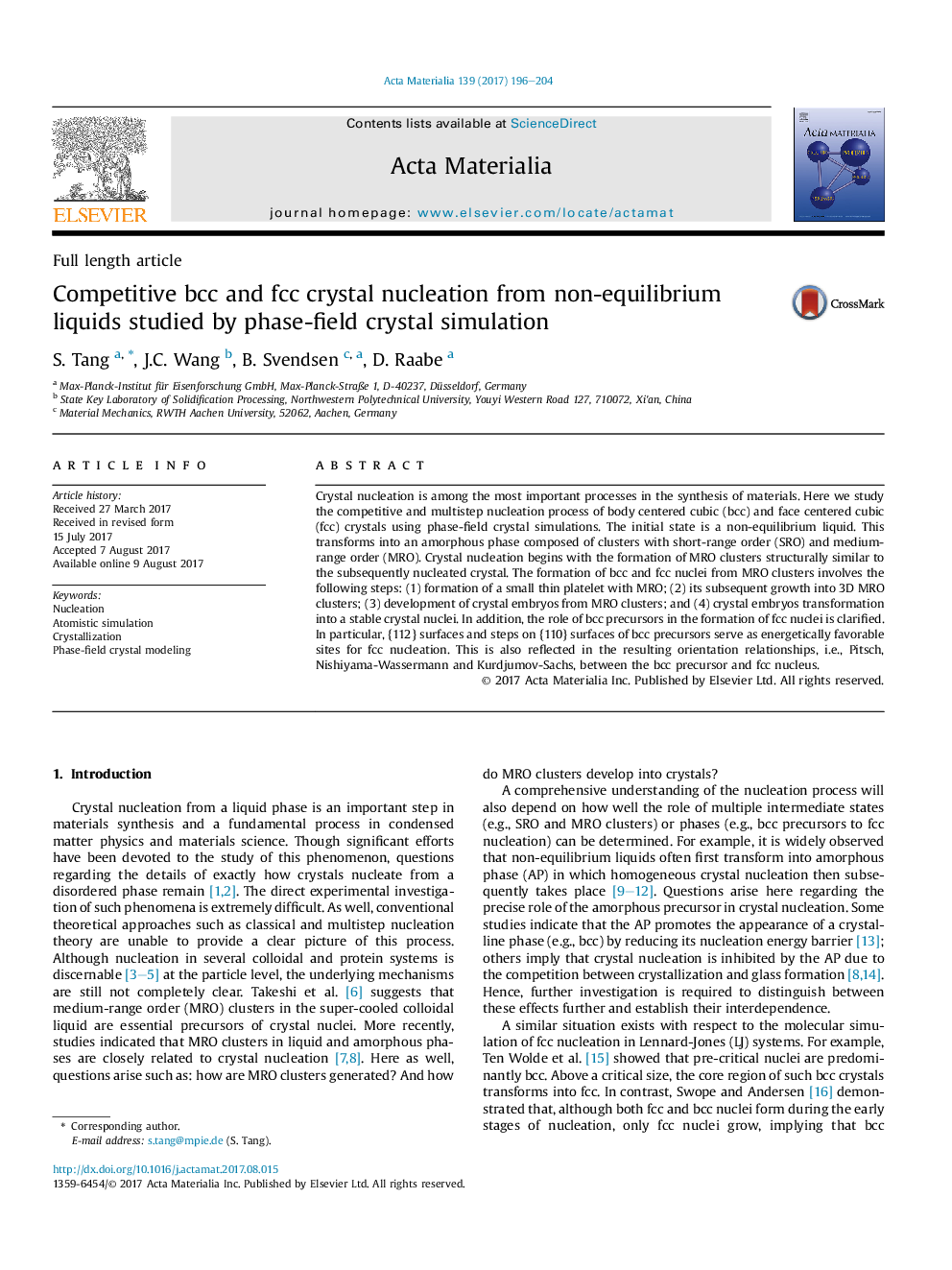| Article ID | Journal | Published Year | Pages | File Type |
|---|---|---|---|---|
| 5435817 | Acta Materialia | 2017 | 9 Pages |
Crystal nucleation is among the most important processes in the synthesis of materials. Here we study the competitive and multistep nucleation process of body centered cubic (bcc) and face centered cubic (fcc) crystals using phase-field crystal simulations. The initial state is a non-equilibrium liquid. This transforms into an amorphous phase composed of clusters with short-range order (SRO) and medium-range order (MRO). Crystal nucleation begins with the formation of MRO clusters structurally similar to the subsequently nucleated crystal. The formation of bcc and fcc nuclei from MRO clusters involves the following steps: (1) formation of a small thin platelet with MRO; (2) its subsequent growth into 3D MRO clusters; (3) development of crystal embryos from MRO clusters; and (4) crystal embryos transformation into a stable crystal nuclei. In addition, the role of bcc precursors in the formation of fcc nuclei is clarified. In particular, {112} surfaces and steps on {110} surfaces of bcc precursors serve as energetically favorable sites for fcc nucleation. This is also reflected in the resulting orientation relationships, i.e., Pitsch, Nishiyama-Wassermann and Kurdjumov-Sachs, between the bcc precursor and fcc nucleus.
Graphical abstractDownload high-res image (858KB)Download full-size image
